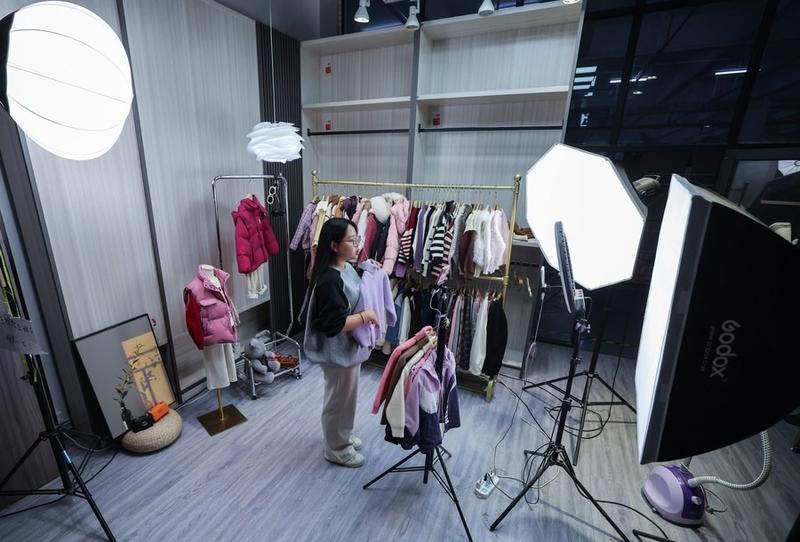 A staff member promotes children's clothing via livestreaming in Zhili Town of Huzhou City in east China's Zhejiang province, Nov 8, 2023. (PHOTO / XINHUA)
A staff member promotes children's clothing via livestreaming in Zhili Town of Huzhou City in east China's Zhejiang province, Nov 8, 2023. (PHOTO / XINHUA)
CHANGCHUN - Beijing resident Han Xue has replaced all her home electrical appliances with products made by Xiaomi, a Chinese consumer electronics brand.
"The television I have used for years is good quality, and the robot vacuum is convenient and cheap. Now, I can control all of my electrical appliances remotely," she said.
"It's not that I can't afford the big international brands," Han noted, "but that domestic products are more cost-effective."
Her attitude is shared by many Chinese consumers, who, during the ongoing "Double Eleven" shopping festival, have shown their preference for Chinese brands and "China-chic" products — products combining fashion with traditional Chinese elements in their design.
READ MORE: China sets new parcel record with 639 million
When e-commerce giant JD.com kicked off its sales event on the evening of Oct 23, the total transaction volume of domestic Chinese brands such as Xiaomi, Huawei, OPPO, OnePlus and Vivo surpassed 100 million yuan (about $13.93 million) in just one second.
Shortly after the "Double Eleven" sales began on online shopping platform Tmall on the evening of Oct 31, the transaction volume of Bosideng, a popular Chinese down jacket brand, quickly surpassed 100 million yuan
Winter clothing has also been a popular consumption category during the annual event. Shortly after the "Double Eleven" sales began on online shopping platform Tmall on the evening of Oct 31, the transaction volume of Bosideng, a popular Chinese down jacket brand, quickly surpassed 100 million yuan.
A report on the development trends of Chinese brands released by JD.com earlier this year revealed that from 2019 to 2022, the number of consumers purchasing China-chic products increased 74 percent, and the quantity of such transactions grew 355 percent over the period.
These trends are encouraging more companies to incorporate Chinese elements into their goods and services, said Tian Yulin, an associate professor at Jilin University.
ALSO READ: China's import expo sees record high tentative deals
According to the report from JD.com, the number of brands producing China-chic products increased 223 percent from 2019 to 2022.
And Generation Z is playing an increasingly important role in the consumption of domestic Chinese products, partly due to price advantages compared to many international alternatives.
Consumer data from JD.com indicates that during this year's "Double Eleven" sales period, 62 percent of spending on Chinese domestic products was from consumers born in the 1990s and 2000s.
 Workers are busy packing products before this year's Singles Day shopping spree at an e-commerce seller's warehouse in Huaian, Jiangsu province, on Nov 1, 2023. (ZHANG ZHAOJIU / FOR CHINA DAILY)
Workers are busy packing products before this year's Singles Day shopping spree at an e-commerce seller's warehouse in Huaian, Jiangsu province, on Nov 1, 2023. (ZHANG ZHAOJIU / FOR CHINA DAILY)
Experts say that an expanding cultural identity among Chinese people is driving the sustained growth of the China-chic economy. And the popularity of domestic products not only represents a consumer trend but also embodies a set of values, life philosophies and lifestyles.
A report released by consulting firm AlixPartners on Oct 31 has shown that consumer loyalty to domestic Chinese brands has been increasing in China, with 66 of survey respondents planning to increase their spending on local brands.


